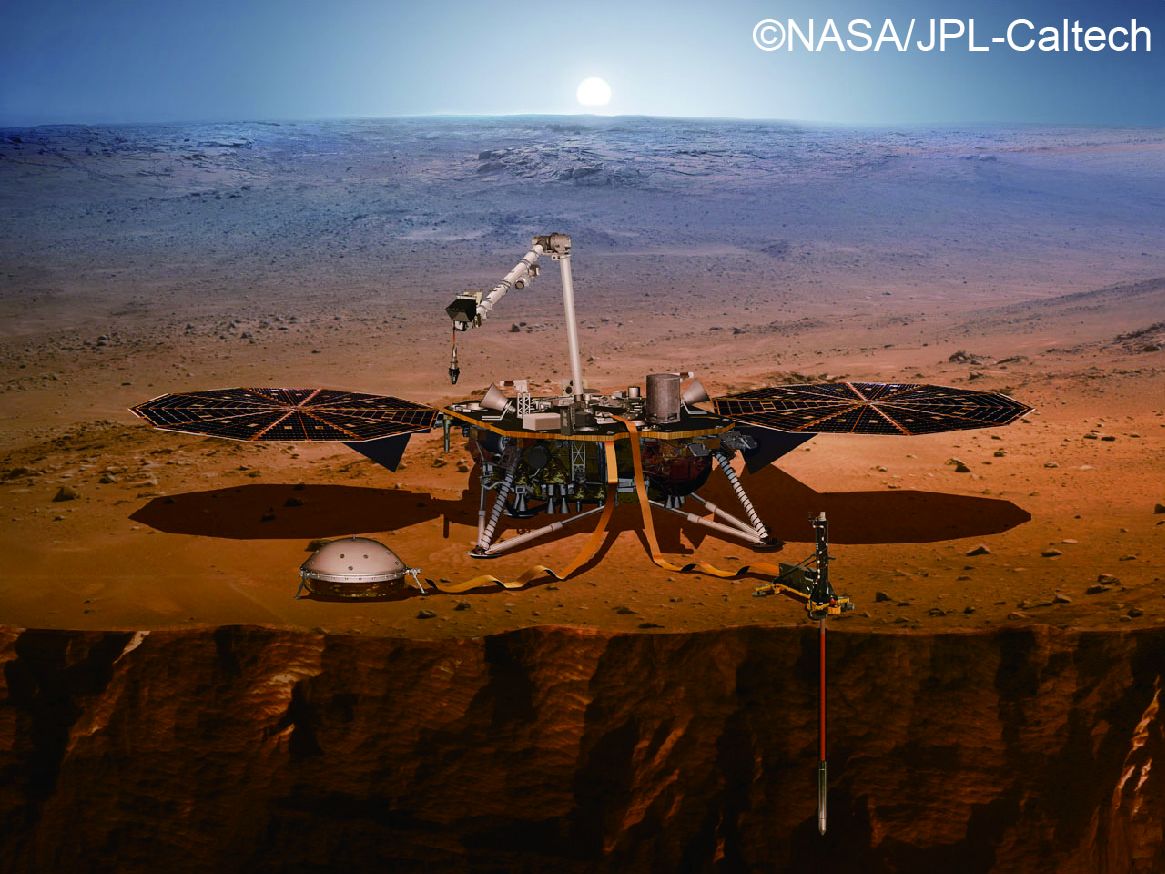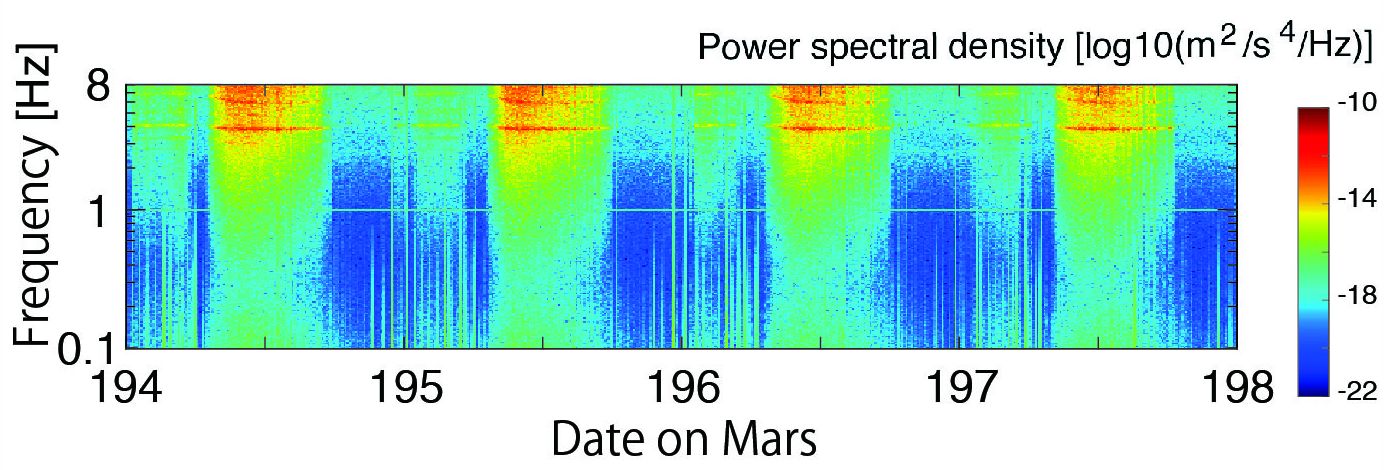研究成果 Research Results
- TOP
- News
- Research Results
- Mars subsurface explored using microtremors
Mars subsurface explored using microtremors
Analysis of weak vibrations shown to be promising for space resource exploration 2020.08.14Research ResultsPhysics & ChemistryEnvironment & Sustainability
Using the seismometer installed on Mars by the InSight lander, researchers at Kyushu University have revealed how weak vibrations called microtremors are generated on the red planet and could potentially be used for detailed subsurface and resource exploration in the future just by installing a network of sensors.
Recently, the first earthquakes—or more properly marsquakes—were detected on the planet Mars by a seismometer placed by NASA’s InSight Martian lander, which arrived on Martian soil on November 26, 2018. Analyzing data from the same seismometer, Takeshi Tsuji, a professor of the Faculty of Engineering, and his group now report the generation mechanisms for much weaker microtremors recorded by the instrument in a paper in Geophysical Research Letters.
Microtremors are also referred to as seismic ambient noise because they are often viewed as a background noise that can obscure a main phenomenon being studied. However, Tsuji’s group has been developing ways to use this noise from known, reliable sources as a tool to probe the structures within Earth.
In their new study, the group reports that they have identified microtremor sources that also meet those requirements on Mars. They found that a type of low-frequency vibration called P waves in the ambient noise could be attributed to wind and changes of sunlight in distant areas, whereas low-frequency surface waves are being created by wind in nearby areas.
In addition, they report that ambient noise with frequencies over 1 Hz appears to originate from vibrations of the lander associated with wind. By utilizing this noise, they were able to identify the structures under the soil close to the landing site.
“Our results indicate that ambient noise data will be useful for imaging and monitoring Mars’s interior structure and exploring natural resources,” explains Tsuji. “Exploration of water in the form of ice on Mars is particularly important because water can be a vital resource for future activities in space.”
While detailed exploration will require more sensors in the future, a major advantage of this approach is that it does not require transporting an artificial vibration source, which is often used for similar analysis, on the long and costly journey to Mars. Furthermore, the noise sources repeat frequently, so waiting for marsquakes to provide the necessary vibrations can also be avoided.
“We will continue our efforts for development of geophysical techniques to contribute to exploration and development of space resources,” says Tsuji.
###
For more information about this research, see “Temporal variation and frequency dependence of seismic ambient noise on Mars from polarization analysis,” Yudai Suemoto, Tatsunori Ikeda, and Takeshi Tsuji, Geophysical Research Letters (2020). https://doi.org/10.1029/2020GL087123
This study was supported by JSPS KAKENHI Grant JP20H01997.
Research-related inquiries
Takeshi Tsuji, Professor
Department of Earth Resources Engineering, Faculty of Engineering
International Institute for Carbon-Neutral Energy Research
Contact information can also be found in the full release.
- TOP
- News
- Research Results
- Mars subsurface explored using microtremors

































